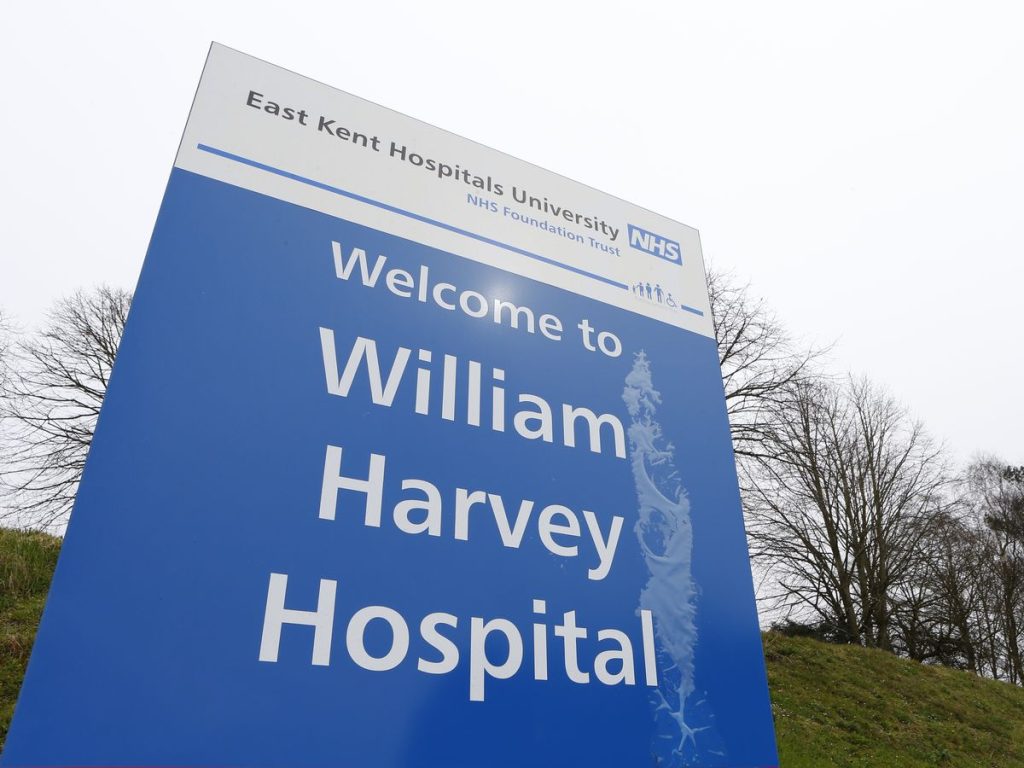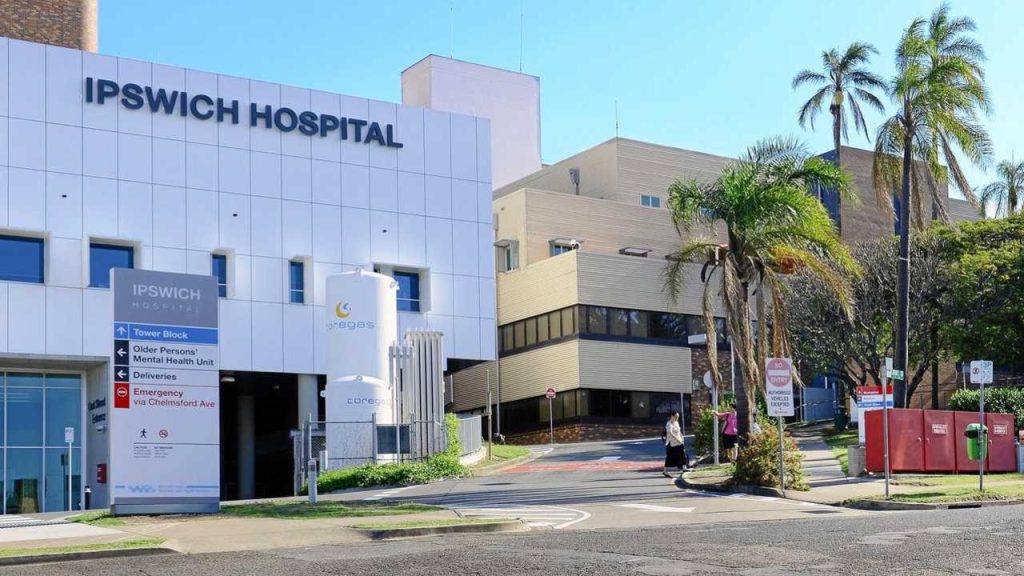“I kept begging for pain relief”; they were forced to give birth without gas and air
BRITAIN/ Some hospitals are suspending supplies of gas and air after it was found to pose health risks to midwives. What can be done to ensure pregnant women still get the help they need?
Leigh Milner
When Leigh Milner was expecting her first baby, she knew exactly how she wanted her labor to go. Her birth plan included an epidural for the pain and she was hoping, she says ruefully, for “all the drugs”. But that is not how things worked out. Milner, 33, a BBC presenter; ended up giving birth to Theo at Princess Alexandra hospital in Harlow. This happened with nothing but paracetamol for pain relief; in what she calls a positively “Victorian” experience.
Having been induced at 38 weeks due to pre-eclampsia; a potentially risky pregnancy complication that causes high blood pressure. The labor progressed very fast and she soon realized she needed something to help her cope. “The pain was just unbearable, my whole body was shaking – I didn’t know where I was. I was kind of slipping in and out of consciousness,” she says.
At this point, many women would gulp gas and air the bedside mix of oxygen; and nitrous oxide familiar to mothers as the commonest form of pain relief in labor. But at Princess Alexandra, along with a handful of other hospitals across south-east England, supplies were temporarily suspended when Milner gave birth in February after the hospital found excessive levels of nitrous oxide (which can pose a long-term health risk to midwives) in the air on the ward.
Leigh’s Words
“I kept begging over and over again – ‘I need something for pain relief’ – and the only thing they could give me was paracetamol because they didn’t have gas and air. I was quite frightened, I didn’t know what else to do,” says Milner. It was only when she reached the labor ward that staff told her there wasn’t time for an epidural. She delivered Theo while being prepped for an emergency cesarean and was left “writhing in pain” for hours afterward, while her husband, Chris Berrow, looked after the baby.
“It seemed like it would never end – it was a mess from start to finish. I understand they have to keep the staff safe, but they also need to support women giving birth,” says Milner, who is keen to talk openly about the experience because of what she sees as a broader expectation that women in childbirth should just grit their teeth and bear it. “There’s a kind of ‘get on with it’ attitude. And yes, I have a lovely healthy baby boy and I would do it all again for him, don’t get me wrong. But I don’t think we can just keep saying to mothers: ‘At least you have a healthy baby, move on, it’s fine.’ Birth is painful, but it shouldn’t be traumatic.”
Statistics
Seventy-six percent of women who gave birth in England last year used gas and air at some point in labor, according to the Care Quality Commission (CQC) watchdog. It doesn’t so much remove the pain as make it more bearable. But it is popular because women can help themselves as necessary, it works quickly and it doesn’t slow down contractions (which stronger opioid painkillers such as pethidine can). While some women use it only as a stepping stone to something stronger, others build their hopes of a “natural” birth with minimal intervention on it.
Research shows that while inhaling gas and air (known as Entonox) in labor is perfectly safe for mothers and babies, long-term cumulative exposure – for example in midwives working day after day on badly ventilated wards, with gas accumulating in the atmosphere – may carry health risks.
Over time it can affect the ability to absorb vitamin B12, damaging nerves and potentially causing anemia. Some studies have associated occupational exposure with fertility problems and the risk of miscarriage, although research is not conclusive.
William Harvey Hospital
Last November, the William Harvey hospital in Ashford, Kent, restricted access to gas and air after detecting high levels of nitrous oxide on the unit (it’s since been restored). Weeks later, a Hospital in Essex temporarily suspended gas and air, saying previous tests had shown “an issue” with levels of nitrous oxide in the maternity unit. Some staff in the unit are reportedly considering legal action against the Mid and South Essex NHS foundation trust that runs the hospital, and the Health and Safety Executive is investigating.

Ipswich Hospital
Ipswich hospital also suspended gas and air use last December, but reintroduced it after installing new ventilation, and in late February, North West Anglia NHS foundation trust temporarily suspended gas and air at maternity units in Peterborough and Huntingdon following air-quality tests. Meanwhile, Watford general hospital avoided a break in Entonox provision after recording high levels in its maternity unit by installing machines to extract the gas.
Pain relief in labor is an emotive subject, laced with guilt and arguments about whether suffering is an essentially “natural” part of childbirth or something nobody would be expected to endure in other fields of medicine. Even before the current problems with gas and air, some mothers struggled to have the birth they wanted. In 2019, the CQC found more than a third of women switched from their planned form of pain relief in labor, mostly for medical reasons, but in 3% of cases because there was no anesthetist available (only anesthetists can give epidurals) and in 19% of cases because there was no time for what they had wanted.

For those whose labors come on suddenly, gas and air may be the only option. “It takes the edge off and makes you feel calmer,” says Kathie, a mother of two daughters from Suffolk, whose labors both took two and a half hours from start to finish, with no time for an epidural. “This also makes you feel less anxious because it gives you something to do – even the act of having the gas mask and breathing in gives you something else to concentrate on.” It helped her to feel less out of control, she says, when things were moving frighteningly fast. But if gas and air can be a godsend for mothers, it carries potential hidden dangers for those looking after them.
Scotland
Leah Hazard is an NHS midwife in Scotland, an activist, and the author of Womb: The Inside Story. She has been approached by several midwives in recent weeks about the impact high Entonox levels at work may have had on them, she says: “There’s a genuine feeling of frustration, anger, and fear because some of the midwives have had real issues with their health and fertility – and, in some cases, B12 deficiency. They are looking back and feeling quite angry about it. I’ve also spoken to midwives who haven’t tried to start a family yet but have been working in labor wards and are worried some damage may have been done.”
While hospitals have been criticized for suddenly suspending services, Hazard points out that it is unreasonable to expect midwives to risk their health. “You would never say: ‘Why don’t builders just keep working on that building with asbestos for a few weeks longer?’ It’s primarily a service by women for women, and [midwifery] was always a role deemed to be warm and fuzzy, and docile. There’s an assumption that we should just put up and shut up.”
Royal College of Midwives
The Royal College of Midwives has also argued that the current crisis reflects a lack of what Dr. Suzanne Tyler, executive director for services to members, called “proper investment” in maternity services, which have long suffered from chronic understaffing and creaking old buildings. We know of crumbling walls, ceilings being held up by props, and even sewage flowing onto wards.

For many midwives, Hazard says, the fact that the risk from Entonox is seemingly highest in older hospitals with poor ventilation revives unhappy memories of the pandemic. “We were well aware then that we were often working in badly ventilated rooms, not shiny new buildings. Many of us caught Covid and have been very ill,” she says. For many midwives, these new worries about safety are “the last straw”.
In theory, there are plenty of alternatives, from “natural” options such as hypnosis and water births to stronger opioids such as pethidine. But Hazard says there is no exact equivalent to gas and air. “They all have their specific profiles in terms of risks and benefits – it’s not like you can say, ‘Really sorry, we don’t have any gas and air, but why don’t you have some morphine?’ That’s a different step up the ladder. Or: ‘Sorry, why don’t you have the birthing pool?’ Well, not everybody wants to give birth in water.”
National Childbirth Trust
The National Childbirth Trust (NCT), which has been fielding calls from worried pregnant women, is advising those in affected areas to ask their midwives about other methods or see if they can switch to another hospital. For those seeking epidurals, who might normally use gas and air while waiting for the anesthetists to get to them; the NCT’s practice manager, Val Willcox, says wards should always have enough anesthetic cover to meet epidural demand, but women “might want to think about other strategies for coping with contractions” if there is a wait at busy times.

“Giving birth is a life-changing event – it’s seismic – and birth is your introduction to parenthood. How the birth goes affects how you feel postnatally, too,” she points out. “You do have rights over your treatment, whether that’s giving birth or having another kind of operation. When the choice is taken away from you, that’s traumatic.”
Birthrights
Birthrights have taken several calls in recent weeks about gas and air, she says – some women only realized it had been withdrawn from their local hospital after reading about it on social media.
Treadway is particularly concerned about the impact on pregnant women who had their first babies during the pandemic, on labor wards operating under severe covid restrictions, and who may be carrying difficult memories from that time into a second pregnancy. “At best, you are going in with a degree of apprehension.”
Six weeks on from Theo’s birth, Milner is recovering well and besotted with her son. But her distressing experience on the labor ward did, she says, color their first days together. She is keen to take up the hospital’s offer of a “birth reflections” session to go over and process her experience with a midwife.
Source: Guardian

